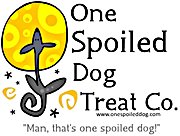Feeding your dog the right food is one of the most important decisions you can make as a pet owner. What your pup eats every day directly affects their energy, health, and overall happiness. With so many dog food options out there, figuring out which one is best can feel like a bit of a puzzle. Don’t worry, this guide breaks it all down so you can make a confident choice that supports your dog’s well-being for years to come.
1. Know What Your Dog Needs
Every dog is different, and their food should match their individual needs. Things like age, size, activity level, and any health issues all play a role in what type of food is best.
Puppies, Adults, and Seniors
Puppies need more protein and fat to support their fast growth. Adult dogs may require a diet that fits their lifestyle, whether that means maintaining weight, managing allergies, or supporting an active routine. Senior dogs often benefit from foods that support joint health and help with weight control.
Size Makes a Difference
Smaller breeds burn calories quickly and often do better with food that’s more energy-dense. Bigger breeds need food that supports their joints and larger bodies. Some large-breed formulas are designed specifically to reduce the risk of joint issues later in life.
Activity Level
If your dog is always on the move, they’ll need food with more protein and fat to keep up with their energy levels. Less active pups or couch-loving dogs may do better with food that helps prevent weight gain.
2. Focus on Quality Ingredients
Not all dog food is created equal. It’s important to check the ingredient list and understand what your dog is really eating.
Look for Real Protein First
Meat should be the first ingredient. Chicken, turkey, beef, or lamb are excellent protein sources that give your dog the amino acids they need for strong muscles and overall health. Stay away from vague ingredients like “meat meal” or “animal by-products” listed at the top — they can be lower in quality.
Add Some Grains and Veggies
Whole grains like oats, brown rice, or quinoa are great for steady energy. Veggies like carrots, peas, and sweet potatoes add fiber, vitamins, and minerals to help with digestion and support your dog’s overall health.
Don’t Forget Healthy Fats
Fats provide energy and help your dog’s coat stay shiny and healthy. Look for foods with fish oil, flaxseed, or chicken fat. Omega-3 and omega-6 fatty acids are especially helpful for skin and joint health.
3. Avoid Low-Quality Fillers and Additives
Just like humans, dogs do better without unnecessary fillers or artificial ingredients.
Skip the Fillers
Ingredients like corn, soy, and wheat are often used to bulk up dog food without adding much nutritional value. These can also trigger allergies or digestive issues in some dogs.
Steer Clear of Artificial Additives
Colors and flavors might make the food look or smell good to us, but they don’t benefit your dog. Instead, choose foods with natural preservatives like vitamin E or vitamin C. These are safer and more supportive of long-term health.
4. Consider Any Special Dietary Needs
Some dogs need a little extra care when it comes to their diet. If your pup has allergies, sensitivities, or specific health issues, you’ll need to be a bit more selective.
Allergies and Sensitivities
If your dog is scratching a lot, has frequent digestive issues, or shows other allergy symptoms, consider a limited-ingredient or hypoallergenic food. Look for novel protein sources like duck or venison and keep ingredients simple to reduce the risk of a reaction.
Health Conditions
Dogs with kidney problems, joint pain, or digestive troubles may need prescription or specially formulated diets. Ingredients like glucosamine and chondroitin can help with joint health, while dogs with kidney issues might need food that’s lower in protein and phosphorus.
Managing Weight
For dogs carrying a few extra pounds, look for food designed for weight control. These formulas usually contain fewer calories and more fiber to help your dog feel full without overeating.
5. Research the Brand
Not all dog food brands are equally trustworthy. Doing a little research can go a long way in making sure you’re feeding your dog something safe and nutritious.
Check for Transparency and Quality
Choose a brand that’s open about where they get their ingredients and how they make their food. Look for companies that meet the standards of the Association of American Feed Control Officials (AAFCO) and conduct regular safety testing.
Read Reviews and Ask Around
Other pet owners and your vet can offer helpful insights. Reviews and personal experiences can give you a better idea of how a certain food performs in the real world.
6. Keep an Eye on Your Dog’s Health
Once you’ve picked a food, keep track of how your dog responds to it. Every dog is different, and what works for one might not work for another.
Watch their coat, energy levels, digestion, and overall behavior. If something seems off or if their needs change with age, don’t be afraid to adjust their diet. Your vet can help you decide whether it’s time for a change or if your current food is doing the job.
Final Thoughts
Feeding your dog a healthy, balanced diet is one of the best ways to support their long-term health. By choosing food that matches their needs and using high-quality, natural ingredients, you’re giving your dog a great foundation for a happy, active life. Keep paying attention to how they’re doing, and don’t hesitate to make changes when needed. Your dog will thank you with a wagging tail and plenty of love.
News
